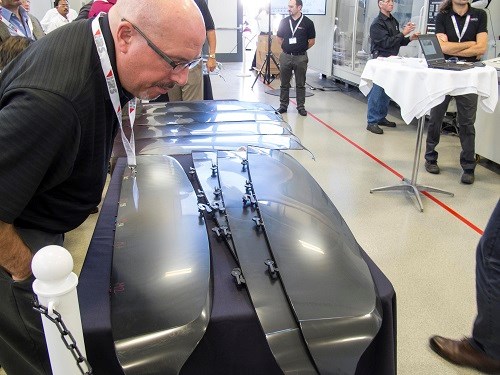Servo Valve-Gate Helps Auto Parts Weigh Less & Look Great
More uniform and lower pressure makes a thinner, better part.

At the recent grand opening of in Byron Center, Mich. (see Starting Up), the newest manufacturing location of Italian hot-runner systems maker, the emphasis was on molding larger automotive appearance parts such as lighting, instrument and door panels, fascias, fenders, and spoilers. The company showcased its FLEXflow servo-driven valve-gate system, which offers eight steps of freely programmable valve-pin position, speed, and acceleration. The results are said to be improved cosmetic appearance, elimination of flow “hesitation” lines while permitting reduced clamp force, part weight, and warpage. During the opening event, mineral-filled TPO rear spoilers were molded on the plant’s 1000-ton injection press (used for mold trials) with and without FLEXflow valve-pin control. Results in the accompanying table show the ability to use 20% lower clamp force while achieving 4.5% to 7.3% weight reduction.
Related Content
-
Back to Basics on Mold Venting (Part 1)
Here’s what you need to know to improve the quality of your parts and to protect your molds.
-
Back to Basics on Mold Venting (Part 2: Shape, Dimensions, Details)
Here’s how to get the most out of your stationary mold vents.
-
Understanding the Effect of Pressure Losses on Injection Molded Parts
The compressibility of plastics as a class of materials means the pressure punched into the machine control and the pressure the melt experiences at the end of fill within the mold will be very different. What does this difference mean for process consistency and part quality?


